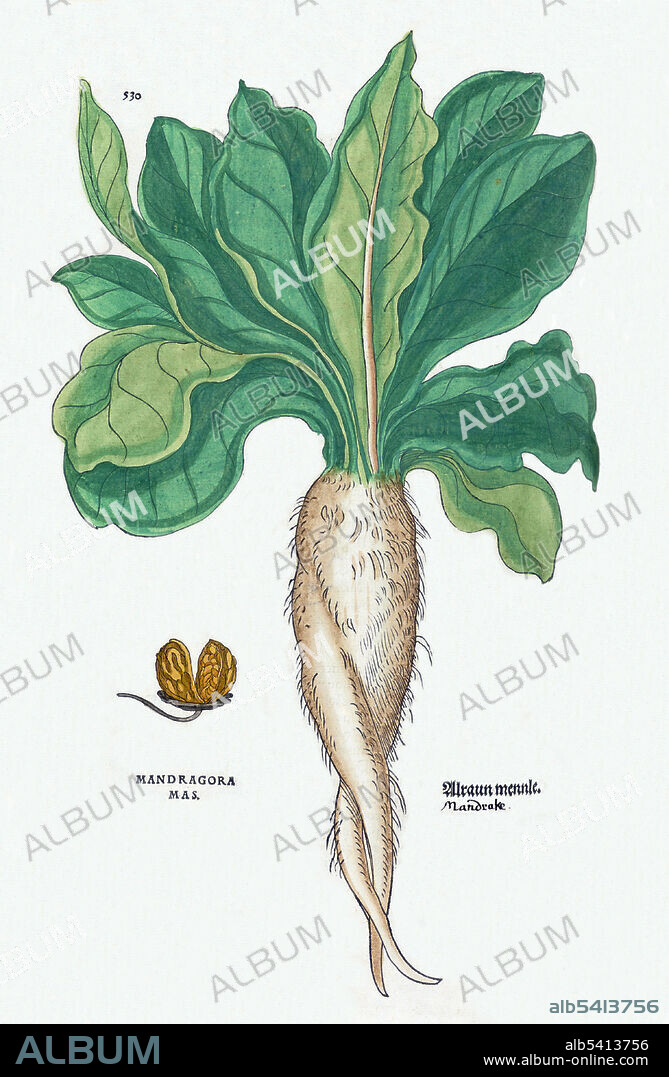alb5413756
Mandrake Root, Alchemy Plant

|
Añadir a otro lightbox |
|
Añadir a otro lightbox |



¿Ya tienes cuenta? Iniciar sesión
¿No tienes cuenta? Regístrate
Compra esta imagen.
Selecciona el uso:

Título:
Mandrake Root, Alchemy Plant
Descripción:
Traducción automática: Planta de mandrágora (Mandrake) de De historia Stirpivm commentarii firma un libro de Leonhart Fuchs sobre plantas herbarias publicado en Basilea en 1542. La obra cubre alrededor de 497 plantas y tiene más de 500 ilustraciones grabadas en madera. Mandrágora es el nombre común de los miembros del género de plantas Mandragora, particularmente la especie Mandragora officinarum, perteneciente a la familia de las solanáceas (Solanaceae). Las raíces a veces se asemejan a figuras humanas y sus raíces se han utilizado durante mucho tiempo en rituales mágicos. Según la leyenda, cuando se desentierra la raíz, grita y mata a todo el que la oye. La literatura incluye instrucciones complejas para cosechar una raíz de mandrágora con relativa seguridad. Era un folclore común que la mandrágora sólo crecía donde el semen de un ahorcado había goteado al suelo. Todas las partes de la planta de mandrágora son venenosas. Los usos en brujería y magia incluyen: trabajos funestos, hierba de Saturno, adivinación y hechizos de prosperidad.
Mandragora (Mandrake) plant from De historia stirpivm commentarii insignes a book by Leonhart Fuchs on herbal plants published in Basel in 1542. The work covers about 497 plants and has over 500 woodcut illustrations. Mandrake is the common name for members of the plant genus Mandragora, particularly the species Mandragora officinarum, belonging to the nightshades family (Solanaceae). The roots sometimes resemble human figures and their roots have long been used in magic rituals. According to the legend, when the root is dug up it screams and kills all who hear it. Literature includes complex directions for harvesting a mandrake root in relative safety. It was a common folklore that mandrake would only grow where the semen of a hanged man had dripped on to the ground. All parts of the mandrake plant are poisonous. Uses in witchcraft and magic include: baneful work, saturn herb, divination and prosperity spells.
Crédito:
Album / Science Source
Autorizaciones:
Tamaño imagen:
3038 x 4650 px | 40.4 MB
Tamaño impresión:
25.7 x 39.4 cm | 10.1 x 15.5 in (300 dpi)
Palabras clave:
ALQUIMIA • GRABADO EN MADERA • HISTORIA • MEDICINA • PLANTA • RAIZ • S. XVI • SIGLO XVI • SOLANÁCEAS • XILOGRAFIA
 Pinterest
Pinterest Twitter
Twitter Facebook
Facebook Copiar enlace
Copiar enlace Email
Email
